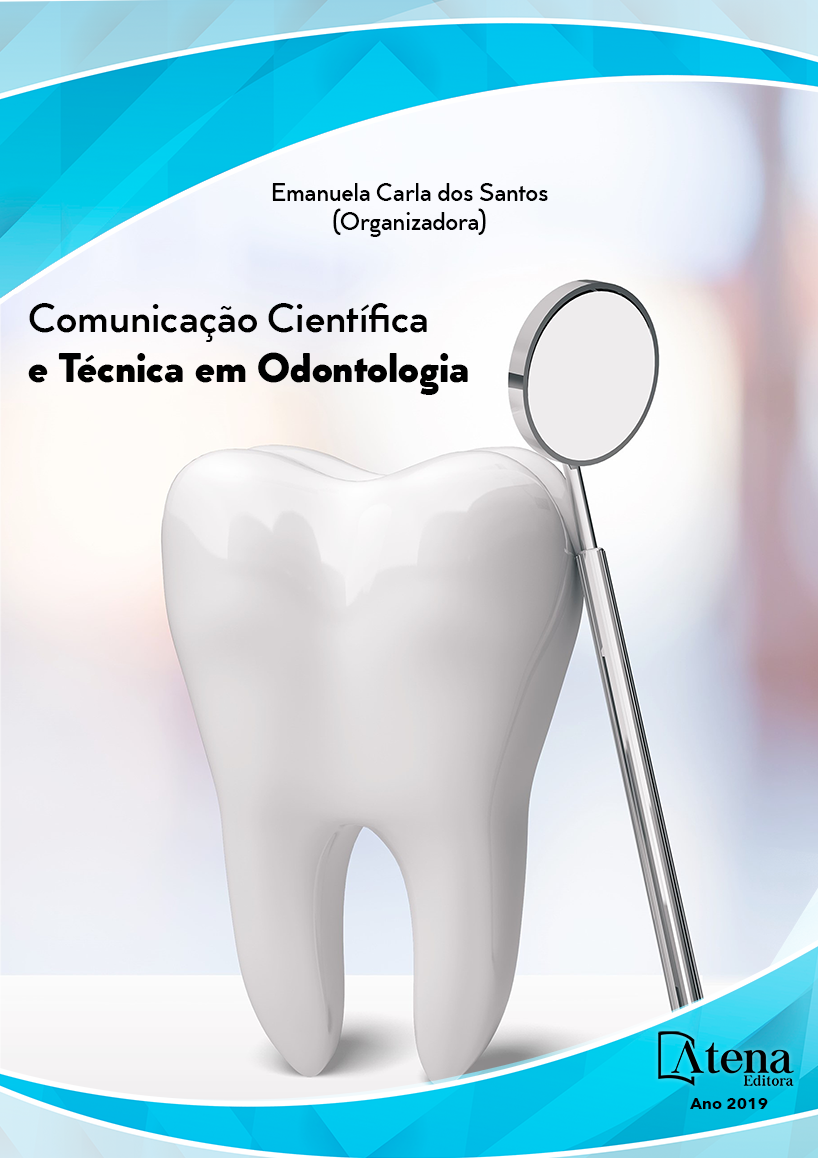
ANÁLISE BIOQUÍMICA DA SALIVA PARA DETECÇÃO DA PRESENÇA DE NITRITOS
O objetivo deste trabalho foi
avaliar através do teste bioquímico da saliva
a presença de nitritos na cavidade bucal e
determinar a relação entre presença de nitritos
e desenvolvimento de câncer de boca. Foram
selecionados 80 voluntários divididos em 3
grupos (G1: não fumantes; G2: fumantes; G3:
controle), que responderam a um questionário
sobre nível socioeconômico, dieta e higienização
bucal. Através da expectoração por 5 minutos,
foi analisada na primeira amostra de saliva total
não estimulada o pH e a presença de nitrito
através de fita reagente. A seguir, a condição
de higiene oral foi avaliada através do Índice de
Placa Visível (IPV) e os participantes realizaram
escovação supervisionada. Após 2 horas,
colheu-se a saliva como no método anterior.
A variável gênero, tabagismo e consumo
de embutidos não apresentaram diferenças
estatisticamente significativas quanto a
presença de nitrito na amostra coletada. Os
resultados mostraram diferença no resultado
da comparação da primeira coleta com a
segunda, pois mostrou que a higienização
da boca interferiu diretamente na redução da
presença de nitrito na cavidade bucal. Portanto,
a higienização da cavidade bucal e a redução
na dieta de alimentos embutidos contribuíram
para a redução no índice de nitrito na boca, o
que enfatiza a importância dos cuidados com
a higiene oral e do papel do cirurgião-dentista
para orientar seus pacientes quanto aos riscos
aos quais estão expostos, reduzindo, assim, um dos fatores contribuintes para o
desenvolvimento do câncer bucal.
ANÁLISE BIOQUÍMICA DA SALIVA PARA DETECÇÃO DA PRESENÇA DE NITRITOS
-
DOI: 10.22533/at.ed.29619010420
-
Palavras-chave: Saliva. Nitrito. Carcinogênese.
-
Keywords: Saliva. Nitrite. Carcinogenesis.
-
Abstract:
The objective of this study was to evaluate the presence of nitrites in the
oral cavity and to determine the relationship between the presence of nitrites and the
development of oral cancer through the salivary biochemical test. Eighty volunteers were
divided into three groups (G1: non-smokers, G2: smokers, G3: control), who answered
a questionnaire on socioeconomic level, diet and oral hygiene. Through the sputum
for 5 minutes, the pH and the presence of nitrite through reagent tape were analyzed
in the first sample of total non-stimulated saliva. Next, the oral hygiene condition
was evaluated through the Visible Plate Index (IPV) and the participants underwent
supervised brushing. After 2 hours, the saliva was collected as in the previous method.
The gender, smoking and intake of sausages did not present statistically significant
differences regarding the presence of nitrite in the collected sample. The results showed
a difference in the result of the comparison between the first and second collections,
since it showed that the hygiene of the mouth interfered directly in the reduction of the
presence of nitrite in the oral cavity. Therefore, the hygiene of the oral cavity and the
reduction in the diet of embedded foods contributed to a reduction in the index of nitrite
in the mouth, which emphasizes the importance of oral hygiene care and the role of the
dental surgeon in guiding his patients to the risks they are exposed to, thus reducing
one of the contributing factors for the development of oral cancer.
-
Número de páginas: 15
- Mayara Ricardo Moraes
- Mariana de Lyra Vasconcelos
- Herculano Ramirez Floro Alonso
- Kelly de Moura Ferreira
- José de Amorim Lisboa Neto
- Camila Maria Beder Ribeiro Girish Panjwani
- Amanda Rafaela da Silva Amorim


